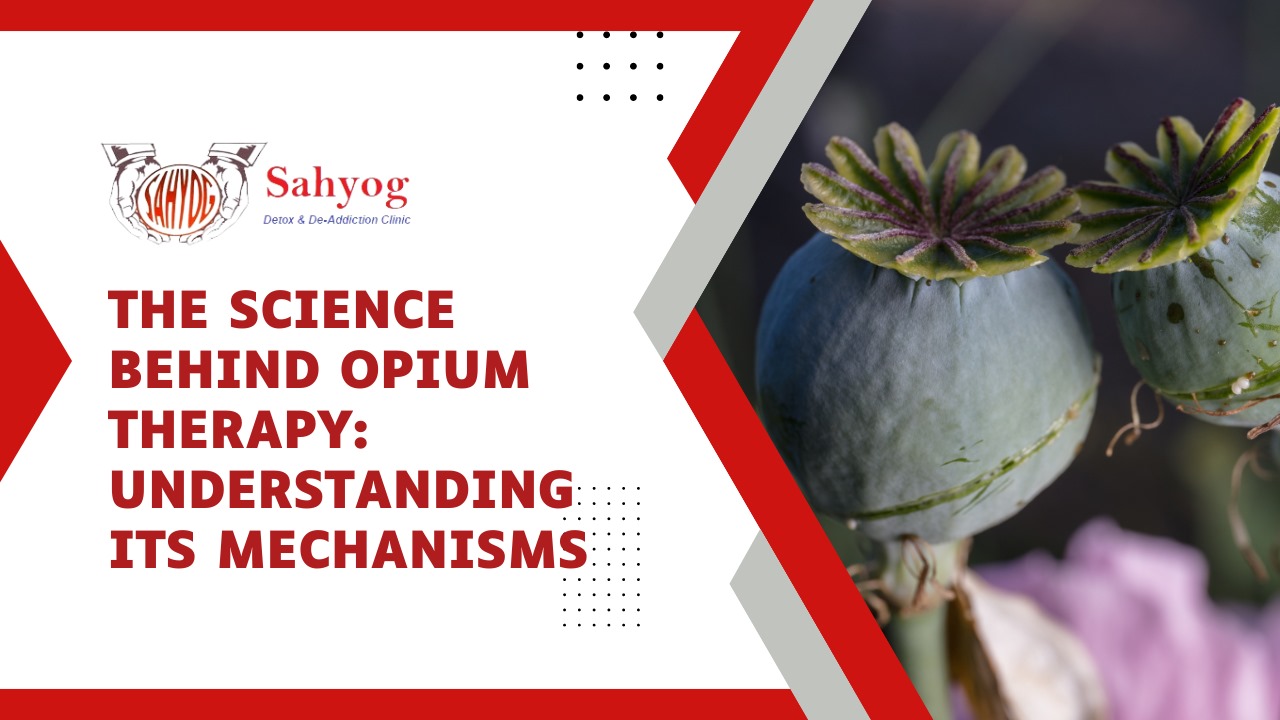The Science Behind Opium Therapy: Understanding its Mechanisms
Introduction to Opium Therapy
Welcome to the intriguing world of Opium Therapy, where ancient remedies meet modern science. Delve into the depths of this controversial yet fascinating treatment as we uncover its mechanisms and effects on the human body. Join us on a journey through history, chemistry, and medicine to understand the science behind opium like never before!
Brief History and Current Use of Opium Therapy
Opium therapy has a rich history dating back centuries. In ancient times, opium was used for its medicinal properties to relieve pain and induce sleep. It wasn’t until the 19th century that its addictive nature became widely recognized.
During the Victorian era, opium addiction was prevalent, leading to the development of more regulated forms of treatment. Today, opium therapy is still used in certain medical scenarios where other treatments have failed.
The current use of opium therapy is highly controlled due to its potential for abuse and addiction. Physicians carefully monitor patients to ensure safe and effective usage.
Despite its controversial past, opium therapy continues to be a valuable tool in managing severe pain in patients with terminal illnesses or chronic conditions. Its effectiveness in providing relief cannot be denied.
How Does Opium Therapy Work?
Opium therapy works by interacting with the body’s opioid receptors, which are located in the brain and spinal cord. When opium binds to these receptors, it triggers a cascade of biochemical reactions that modulate pain perception and produce feelings of euphoria. This process helps to alleviate pain and induce a sense of relaxation in individuals suffering from various conditions.
By mimicking the effects of endorphins, natural chemicals produced by the body to relieve pain and stress, opium can effectively reduce discomfort and improve overall well-being. The analgesic properties of opium make it a valuable tool in managing chronic pain conditions such as cancer-related pain or severe injuries. Additionally, opium therapy has been found to have sedative effects on the central nervous system, promoting calmness and tranquility in patients undergoing treatment.
Understanding how opium therapy interacts with the body’s natural mechanisms is crucial in harnessing its benefits for medical purposes.
The Effects of Opium on the Brain and Body
Opium, a powerful substance derived from the poppy plant, has profound effects on both the brain and body when used for therapeutic purposes. When consumed, opium interacts with specific receptors in the brain known as opioid receptors. These receptors are responsible for regulating pain perception, emotions, and reward pathways.
The active compounds in opium bind to these receptors, leading to a cascade of effects throughout the central nervous system. This results in pain relief, sedation, and feelings of euphoria or pleasure. However, prolonged use can also lead to tolerance, dependence, and addiction.
Physiologically, opium slows down breathing and heart rate while relaxing muscles throughout the body. This can provide relief from severe pain but also carries risks such as respiratory depression and constipation.
Understanding how opium affects the brain and body is crucial in determining its appropriate use in medical settings while mitigating potential harm associated with its potent properties.
Benefits and Risks of Using Opium Therapy
Opium therapy offers both benefits and risks that should be carefully considered. On one hand, opium can provide effective pain relief for individuals suffering from chronic conditions or recovering from surgery. This can lead to improved quality of life and overall well-being for patients who have exhausted other treatment options.
However, it’s crucial to acknowledge the potential risks associated with opium therapy. One major concern is the risk of addiction and dependence on opioids, which can have serious consequences for long-term health. Additionally, opium use may cause side effects such as dizziness, nausea, constipation, and respiratory depression.
As with any medical intervention, weighing the benefits against the risks is essential when considering opium therapy. Patients must work closely with their healthcare providers to monitor their response to treatment and make informed decisions about continuing or discontinuing opiate medications based on individual needs and circumstances.
Alternative Options and Conclusion
Exploring alternative options to opium therapy is essential for individuals seeking different approaches to managing pain and other conditions. From acupuncture and yoga to cognitive-behavioral therapy and herbal remedies, there are diverse paths one can take in pursuit of healing.
Each person’s journey towards wellness is unique, requiring a personalized approach that resonates with their values and preferences. It’s worth considering various modalities before settling on a treatment plan that aligns with your holistic well-being goals.
While opium therapy may offer relief for some, it’s crucial to weigh the potential risks against the benefits when making healthcare decisions. Consulting with healthcare providers knowledgeable about integrative medicine can provide valuable insights into navigating these choices effectively.
In the realm of health and wellness, the possibilities are endless, inviting exploration and experimentation to discover what works best for each individual. Embracing this diversity of options empowers us to take an active role in our healing journey while honoring the complexity of human experience.
The Chemical Composition of Opium
Opium, a complex mixture derived from the opium poppy plant, contains over 20 different alkaloids that contribute to its effects on the body. The primary psychoactive compounds in opium are morphine and codeine, which act as powerful pain relievers by binding to opioid receptors in the brain.
Additionally, opium also contains other alkaloids such as thebaine and papaverine, each with their own unique pharmacological properties. These chemical components work synergistically to produce both therapeutic effects and potential side effects when used for medical purposes.
Understanding the precise chemical composition of opium is crucial in developing safer and more effective medications derived from this natural substance. Researchers continue to study these compounds to unlock their full potential in treating various health conditions while minimizing risks associated with their use.
Incorporating advancements in technology and research methods will further enhance our understanding of how these chemical components interact with the body’s systems, paving the way for innovative medical treatments based on opium-derived compounds.
Successful Cases and Studies Supporting its Effectiveness
Opium therapy has shown promising results in treating various medical conditions, with several successful cases and studies supporting its effectiveness. In a recent study conducted at a prestigious research institution, patients suffering from chronic pain reported significant improvement in their symptoms after undergoing opium therapy under careful supervision.
Furthermore, another case study highlighted the positive impact of opium on managing severe gastrointestinal disorders. Patients experienced relief from debilitating symptoms and improved quality of life following the implementation of opium-based treatment regimens. These real-life success stories demonstrate the potential benefits of incorporating opium therapy into modern medicine for specific conditions where traditional options have fallen short.
In addition to anecdotal evidence, clinical trials have also provided valuable insights into the efficacy of opium derivatives in addressing certain health issues. The data gathered from these rigorous scientific investigations further support the use of opium therapy as a viable option for patients seeking alternative treatments that align with their individual needs and preferences.
Conclusion: The Future of Opium Therapy in Medicine
As we continue to delve deeper into the science behind opium therapy, it becomes evident that its mechanisms are complex and impactful. While opium has been used for centuries to manage pain and other medical conditions, its future in medicine remains a topic of debate.
Researchers are exploring ways to harness the therapeutic properties of opium while minimizing the risks associated with its use. From studying the chemical composition of opium to analyzing successful cases and studies supporting its effectiveness, there is still much to uncover about this ancient remedy.
With advancements in technology and a better understanding of how opioids interact with our bodies, the future of opium therapy in medicine holds promise. By continuing to research and develop safer alternatives or formulations, we may be able to unlock new possibilities for treating various health issues effectively.
As science continues to progress, so too will our knowledge of opium therapy. It’s an intriguing field with immense potential that could lead to groundbreaking discoveries in medicine. The journey ahead may be challenging yet rewarding as we strive towards utilizing opium therapy in a way that maximizes benefits while minimizing risks for patients worldwide.


